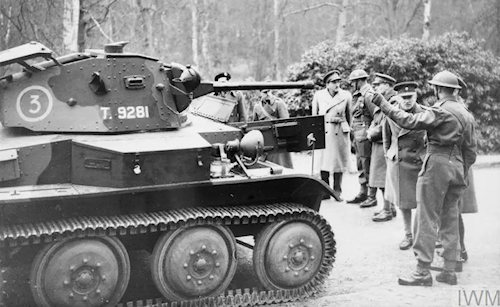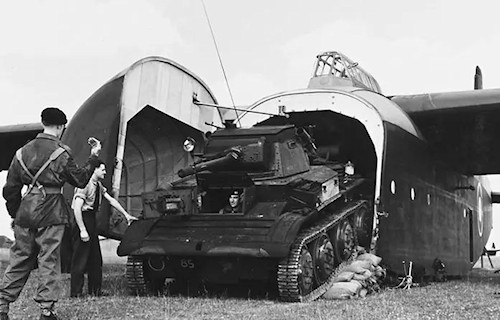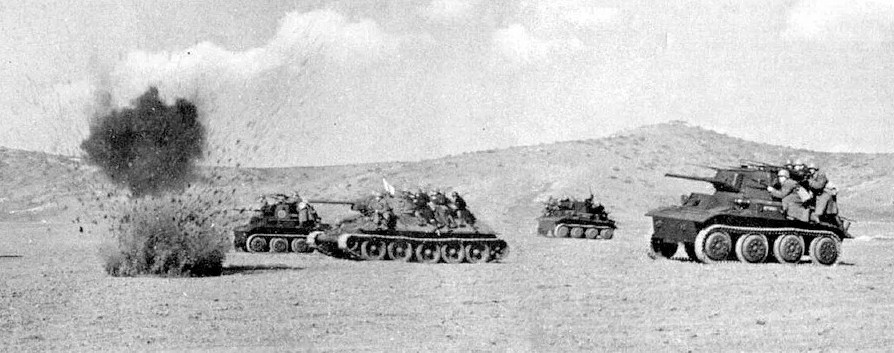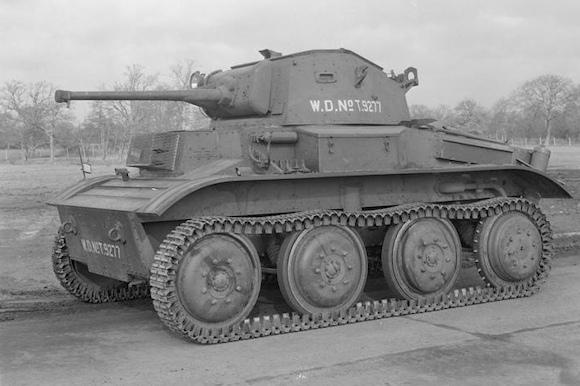Il Tank Mk VII Tetrarch was a British light tank used during the Second World War. The main users of the vehicle were the British Army and the armored units of the Red Army (last image).
Produced by Vickers-Armstrong, the vehicle was conceived and designed in 1938. Production lasted from 1938 to 1942; overall, approximately 100/177 were built Tetrarch.
The tank Tetrarch it was fast and, in some variants, armed well beyond the normal calibers for light tanks: “a 76 mm howitzer for close support shooting (use, therefore, by self-propelled artillery). Another version was the amphibious one, truly exceptional, so much so that the same mechanics were adopted for the American Sherman tanks, precisely in the amphibious version.”1
It is worth remembering that in the summer of 1940 (after the capitulation of France) a fair number of Tetrarch they were assigned to the armored units stationed in the United Kingdom in view of the German landing, Operation Sea Lion, ultimately never carried out. In this regard, theoperation Leone Marine it envisaged that within four days of the start of the operation on the coast of the United Kingdom a first wave of 10 divisions would land with the aim of establishing a bridgehead. After about a week he had to “commence the main advance inland, having as its first object the conquest of the great arc of high ground which extends from the Thames Estuary to Portsmouth. In the next phase, London would be cut off, isolating it from the western regions of the country."2
 In parallel with this operation, Field Marshal von Reichenau's Sixth Army of Army Group B was to set sail from Cherbourg (France) and land, with a first wave of 3 divisions, in Lyme Bay, west of Portland Bill, and then "rush" towards north towards the Severn Estuary.
In parallel with this operation, Field Marshal von Reichenau's Sixth Army of Army Group B was to set sail from Cherbourg (France) and land, with a first wave of 3 divisions, in Lyme Bay, west of Portland Bill, and then "rush" towards north towards the Severn Estuary.
The second juncture of the invasion would have been represented by a mobile breakthrough force comprising 6 armored divisions and 3 motorized divisions organized into 3 corps. Furthermore, it would later be followed by a third wave of 9 infantry divisions and a fourth wave of 8 infantry divisions.
It is important to underline that "for transportation 155 transports were expected to be used across the Channel in the two echelons of the first wave troops, for a total of approximately 700.000 tons, as well as more than 3000 smaller boats: 1720 barges, 470 tugboats and 1160 motorboats. "3
A limited number of tanks Tetrarch took part in the Battle of Madagascar (5 May-6 November 1942). It should be noted that the primary objective of the conquest of Madagascar was to prevent access to the island's ports by the Imperial Japanese Navy.
In the summer of 1942 i Tetrarch they were assigned to 1a British airborne division – such as airborne light tanks – to support the airborne forces.
 About twenty Mk VII Tetrarch they took part inOperation Tonga (5-7 June 1944). However, the results were not particularly brilliant…
About twenty Mk VII Tetrarch they took part inOperation Tonga (5-7 June 1944). However, the results were not particularly brilliant…
Il Tetrarch it was withdrawn from service in 1950.
Il Mk VII Tetrarch it had a length of 4,11 m, height 2,12 m and width 2,31 m. She weighed 7600 kg.
The armor was 14 mm, and the main armament consisted of a 2-pounder (40 mm) gun or a 76 mm cannon. In addition, it consisted of a 7,92 mm Besa machine gun.
Engine: Meadows 12-cylinder petrol engine, 165 HP. The maximum speed was 64 km/h.
The vessel could count on a crew of 3 men.

1 PF Cazzani, The Tank Mk VII Tetrarch, in Illustrated History n°207, 1975, p.109
2 BH Liddel Hart, Military history of World War II. Armies, fronts and battles, Mondadori, Milan, 2021, p.121
3 Ibidem
Photo: web / IWM












